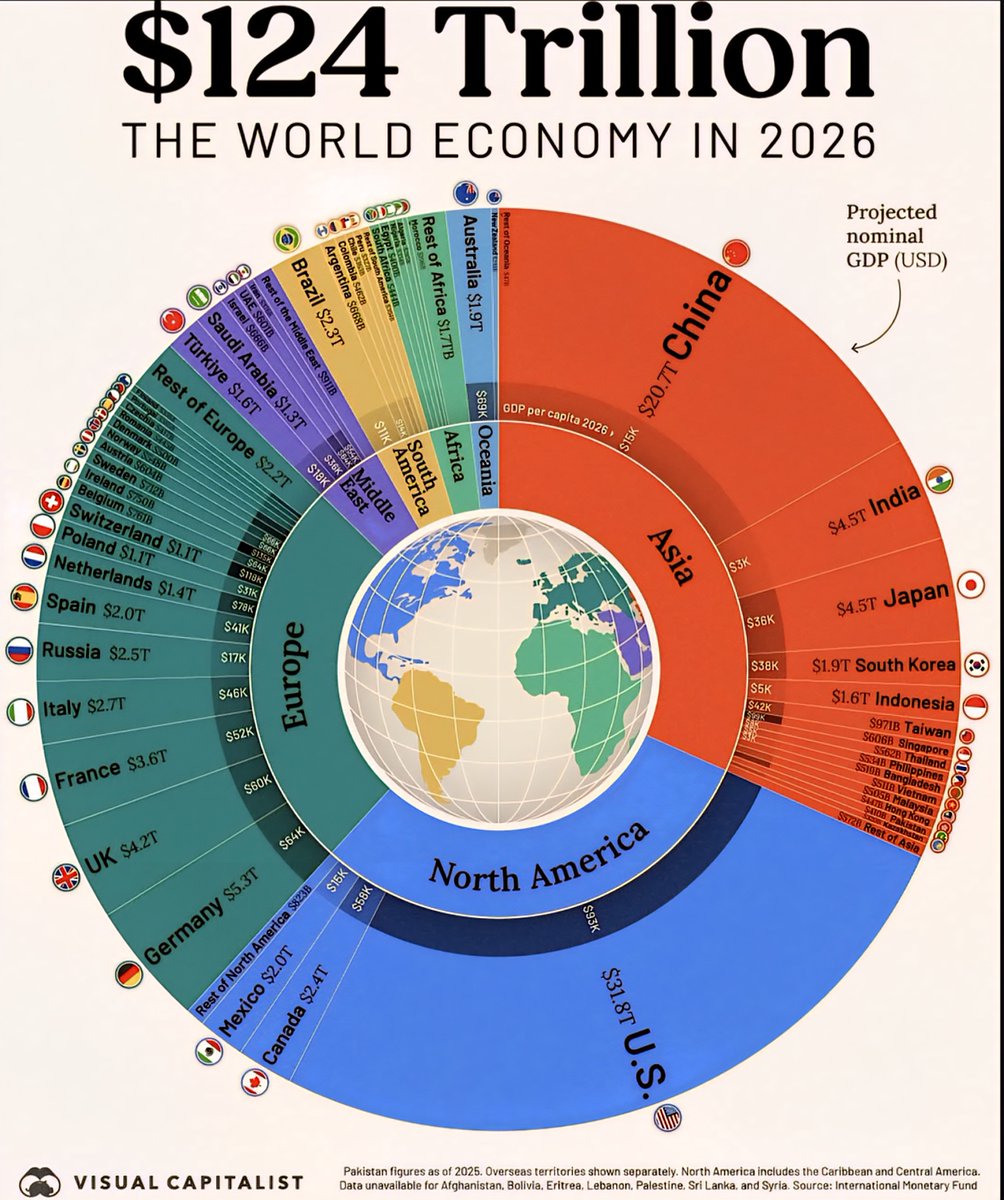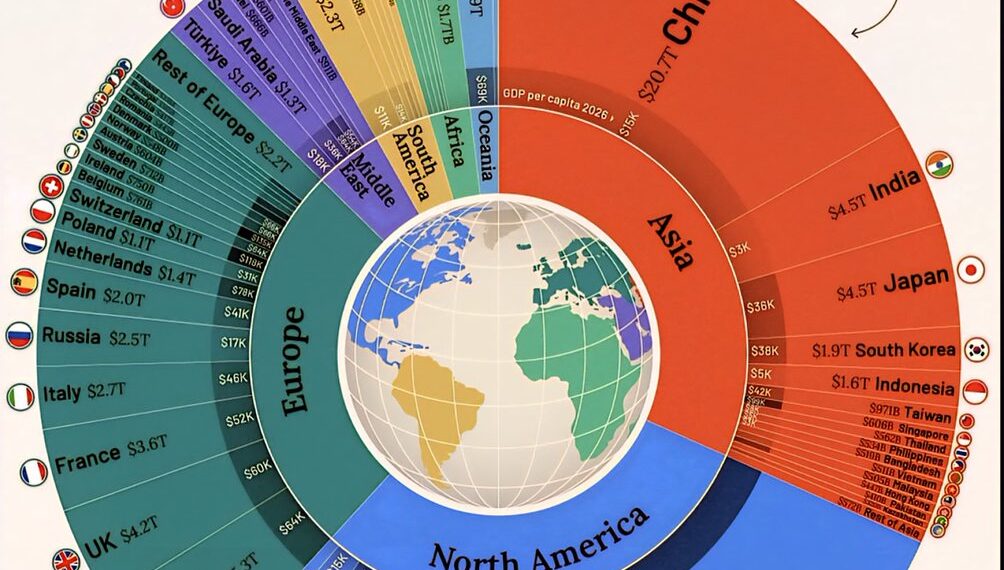Select Language:
The 2026 Economic Powerhouses: What You Need to Know

1. The United States Continues to Lead the Global Economy
In 2026, the United States maintains its position as the largest economy in the world with a staggering GDP of approximately $44 trillion. The nation’s economic resilience stems from its diverse industries, technological advancements, and robust consumer spending. Despite challenges such as trade tensions and inflationary pressures, U.S. economic growth remains steady.
The technology sector remains a driving force, with Silicon Valley companies dominating innovation and contributing significantly to the GDP. Additionally, investments in green energy and infrastructure have bolstered employment and economic output. The U.S. government’s focus on technological research and development continues to secure its position at the top of the global economic rankings.
2. China’s Rapid Growth Propels Its Economy to New Heights
China’s economy has experienced extraordinary growth over the past few years, reaching approximately $20 trillion in 2026. The nation has transitioned from manufacturing to a model emphasizing high-tech industries, digital services, and a burgeoning consumer market.
The Belt and Road Initiative has expanded China’s global reach, boosting trade and infrastructure development across Asia, Africa, and Europe. With investments in artificial intelligence, renewable energy, and advanced manufacturing, China is positioning itself as a technological and economic leader on the world stage.
However, challenges such as demographic shifts and geopolitical tensions could influence future growth trajectories. Despite this, China’s economy remains a critical player in the global landscape.
3. EU Economy Gains Momentum Through Innovation and Sustainability
The European Union’s combined economy has grown to approximately $18 trillion in 2026. The region’s focus on sustainable development, renewable energy, and digital transformation has been central to its economic strategy.
European countries have made strides in green technology, leading to innovation hubs in Germany, France, and the Nordic nations. Additionally, increased integration of digital infrastructure and investment in artificial intelligence have contributed to productivity gains.
The EU’s commitment to climate goals and digital sovereignty has attracted international investment, fostering job creation and economic stability. Despite uncertainties linked to geopolitical tensions and post-pandemic recovery, the EU remains a vital component of the world’s economic engine.
4. India’s Surging Economy: A Catalyst for Growth
India’s economy has expanded rapidly, reaching roughly $13 trillion in 2026. The nation’s growth is fueled by a young, tech-savvy population, increasing urbanization, and reforms in infrastructure and manufacturing.
The country has become a global hub for information technology, pharmaceuticals, and renewable energy. Government policies promoting ease of doing business and manufacturing initiatives like “Make in India” have attracted foreign direct investment.
Additionally, digital payments, e-commerce, and fintech sectors have seen explosive growth. India’s expanding middle class continues to drive consumption, making it one of the most promising economies in the world.
5. The Rising Power of the Rest of the World
Other regions, including Southeast Asia, Africa, and Latin America, are experiencing significant economic expansions. Countries like Indonesia, Nigeria, and Brazil are becoming increasingly influential.
In Africa, technological innovation, resource development, and improving political stability are contributing to a projected combined GDP of approximately $10 trillion. Southeast Asian nations, powered by manufacturing and digital economies, hold substantial growth potential.
These regions collectively contribute to the global economy’s approximately $124 trillion in 2026, reflecting a more multipolar economic landscape than ever before.
6. The Role of Technology and Sustainability in Shaping 2026’s Economy
Across the globe, technological innovation and sustainability are intertwining to reshape economic models. Green energy investments, electric vehicles, and clean technology sectors are experiencing unprecedented growth, with trillions of dollars flowing into these industries.
Artificial intelligence, automation, and digital infrastructure are transforming traditional industries, increasing efficiency and reducing costs. Governments and private sectors are collaborating to develop sustainable solutions that support long-term growth.
The focus on environmental, social, and governance (ESG) criteria is now embedded into corporate strategies worldwide, driving responsible investment and fostering resilience amid global challenges.
In conclusion, 2026 marks a milestone in the evolving landscape of global economics. While the U.S. and China continue to dominate, emerging markets and sustainable innovation are reshaping the power balance. The interconnectedness of technology, sustainability, and economic development offers a promising outlook for growth and stability in the years to come.






